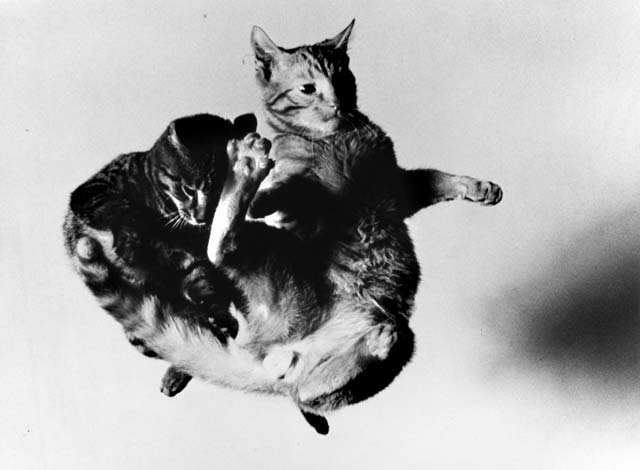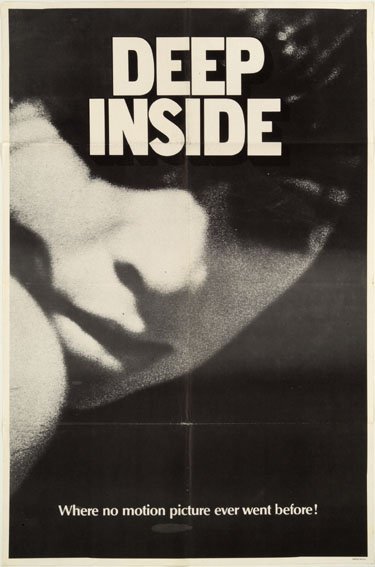psychology

According to the research, over 95% of males have masturbated to orgasm by age 20, compared to around 60% of women (with some studies suggesting an even larger gap).
The discrepancy with regard to masturbation is doubly problematic because masturbation, it turns out, is a particularly important predictor of sexual health and happiness for women, more so then for men. One of the best predictors of whether a woman will be able to achieve orgasm in her sexual relations is a history of masturbation in adolescence.
Why such a gap? One reason may be men’s higher sex drive. If you define sex drive as preoccupation with sexual behavior and thoughts, including sex crimes and paraphilias, then men routinely manifest higher levels of it than women. Such elevated interest may lead to higher masturbation rates. Structural differences may also play a role. A penis is highly accessible and regularly handled in the act of urination, which may lead to greater familiarity with its potential uses. (…)
According to Thomas W. Laqueur, a professor of history at the University of California at Berkeley, masturbation was not a topic of great interest to the powers that be until 1712, when a con man named John Marten anonymously published a book spectacularly entitled: Onania; or, The Heinous Sin of Self Pollution and all its Frightful Consequences, in both sexes Considered…
{ PsychologyToday | Continue reading }
photo { Nobuyoshi Araki }
psychology, relationships, science, sex-oriented | October 5th, 2010 2:33 pm

Psychologists have long argued that people have a “set point” for happiness. Regardless of what life brings, the set-point theory goes, happiness levels tend to be stable. A big life event could create a boost of joy or a crush of sorrow, but within a few years, people return to a predetermined level of life satisfaction, according to the theory.
A new study, which used a nationally representative sample of almost 150,000 German adults, finds the opposite. (…) The study also echoed previous happiness research in finding that money doesn’t buy happiness. (…)
So what contributed to long-term happiness? The researchers found several correlations between life choices and life satisfaction:
• Marry well
• Focus on the family
• Go to church
• Work, but not too much (or too little)
• Social interaction and exercise
{ LiveScience | Continue reading }
psychology | October 5th, 2010 2:00 pm

Some people meet, fall in love and get married right away. Others can spend hours in the sock aisle at the department store, weighing the pros and cons of buying a pair of wool argyles instead of cotton striped. (…)
People who often have conflicting feelings about situations—the shades-of-gray thinkers—have more of what psychologists call ambivalence, while those who tend toward unequivocal views have less ambivalence. (…)
For decades psychologists largely ignored ambivalence because they didn’t think it was meaningful. Now, they have been investigating how ambivalence, or lack of it, affects people’s lives, and how they might be able to make better decisions. Overall, thinking in shades of gray is a sign of maturity, enabling people to see the world as it really is. (…)
If there isn’t an easy answer, ambivalent people, more than black-and-white thinkers, are likely to procrastinate and avoid making a choice, for instance about whether to take a new job, says Dr. Harreveld. But if after careful consideration an individual still can’t decide, one’s gut reaction may be the way to go.
{ WSJ | Continue reading | Thanks Tim }
psychology | October 5th, 2010 9:41 am

Grunting During a Tennis Shot May Provide a Competitive Advantage
Some tennis fans and players feel that grunting during a tennis shot distracts the opponent, and therefore provides an unfair competitive advantage. Many professional tennis players grunt; one of them (Maria Sharapova) is reported to grunt at over 100 decibels. (…)
Grunting slowed down student response time by between 21 and 33 milliseconds, and the students made between 3% and 4% more predicted directional errors, whether the video clips ended at contact with the ball or 100 milliseconds afterwards. These differences in time and error were statistically significant.
{ NASW | Continue reading }
psychology, sport | October 3rd, 2010 11:37 am

Scientists found that humans exhibit two types of memory. They call one “verbatim trace,” in which events are recorded very precisely and factually. Children have more “verbatim trace,” but as they mature, they develop more and more of a second type of memory: “gist trace,” in which they recall the meaning of an event, its emotional flavor, but not precise facts. Gist trace is the most common cause of false memories, occurring most often in adults. Research shows that children are less likely to produce false memories, because gist trace develops slowly.
{ ScienceDaily | Continue reading }
Psychological scientists have discovered all sorts of ways that false memories get created, and now there’s another one for the list: watching someone else do an action can make you think you did it yourself. (…)
They found that people who had watched a video of someone else doing a simple action — shaking a bottle or shuffling a deck of cards, for example — often remembered doing the action themselves two weeks later.
{ ScienceDaily | Continue reading | Related: People can easily create false memories of their past and a new study shows that such memories can have long-term effects on our behavior. }
photo { František Drtikol }
brain, kids, psychology, science, time | October 1st, 2010 6:15 pm

Red is a color evoked by light consisting of the longest wavelengths of light discernible by the human eye.
Longer wavelengths than this are called infrared (below red), and cannot be seen by the naked human eye.
{ Wikipedia | Continue reading }
In Judo, for instance, fighters are allocated Blue or White prior to competition, and in Taekwon-Do, the colours are Red and Blue. Boxers often wear multi-coloured or patterned trunks, but the colour of the gloves is often different.
Hill and Barton (2005) demonstrated that in the 2004 Olympic Games Red competitors were significantly more successful than blue competitors in an even contest. Basically, Red doesn’t give you a +10 str, but it will a) tip the bias of the point recorders in your favour; b) increase one’s competitiveness; or c) scare you opponent just enough so that you have an advantage.
Their paper, published in Nature, does not speculate on the cause – a, b, and c are my own speculations. They also found that Red vs. non-red and non-blue also tipped the advantage to the red competitors. It kind of stands to reason – red is a scary colour, it’s a natural marker of many evolutionary elements, and it’s visually arresting , like black.
I thought maybe it has to do with dominance of colour – but Dijkstra and Preenen (2008) demonstrated that in Judo (where competition is between blue v white) there is no relative advantage to blue – which is arguable the more dominant colour.
{ Psycasm | Continue reading }
photo { Adam Amengual }
colors, fights, ideas, psychology | October 1st, 2010 6:10 pm

New study finds groups demonstrate distinctive ‘collective intelligence’ when facing difficult tasks. (…)
That collective intelligence, the researchers believe, stems from how well the group works together. For instance, groups whose members had higher levels of “social sensitivity” were more collectively intelligent. “Social sensitivity has to do with how well group members perceive each other’s emotions,” says Christopher Chabris. (…)
The average and maximum intelligence of individual group members did not significantly predict the performance of their groups overall. (…)
Only when analyzing the data did the co-authors suspect that the number of women in a group had significant predictive power. “We didn’t design this study to focus on the gender effect,” Malone says. “That was a surprise to us.” However, further analysis revealed that the effect seemed to be explained by the higher social sensitivity exhibited by females, on average.
{ EurekAlert | Continue reading }
photo { Helmut Newton }
ideas, psychology, relationships | October 1st, 2010 5:45 pm

Psychologists tend to take the experience of regret as a given, and occupy themselves with the study of its antecedents, consequences, and boundary conditions. They find, for example, that short-term regret is focused on things we did rather than did not do, whereas long-term regret shows the reverse pattern. (…)
Regret springs from the wish to undo an earlier decision. Why? Typically, we feel regret when-and because-we have obtained new information.
{ Psychology Today | Continue reading }
ideas, psychology | September 29th, 2010 8:35 am

Some people are surprised, even disturbed, by the idea that our vision does not give us an accurate picture of what we look at. For example, the colours we experience are not a measure of the wavelength of the light entering our eyes. But accuracy is not the point of vision; the function is to be useful and colour consistency is far more useful then fidelity to wavelength spectra. The same surprise is shown in the reaction to the idea that our memories are reworked continuously so that over time they lose their accuracy. (…)
A great deal of biological energy is used to create memories and to re-consolidate them and therefore we can assume that they have a very important biological role. (…)
We first have to have the experiences to remember – we create consciousness experiences which become stored as temporary memories. These are soon made more permanent as an event or an episode. Over weeks, months, years, decades they are continually reworked and re-consolidated. They are packaged together and lose their individuality, they are up-dated by newer memories, they are categorized and lose detail not related to their category. Eventually they lose their character as episodic memory and became more a factual or semantic type of memory.
{ Janet Kwasniak | Continue reading }
psychology, science, time | September 27th, 2010 9:28 pm

Babies can readily differentiate pet dogs and cats from “life-like” battery-operated toy dogs and cats. Babies will smile at, hold, follow, and make sounds in response to the live animals more than in response to the toys. In one study, 9 month olds were more interested in a live rabbit than an adult female stranger or a wooden turtle. A 1989 study of 2- to 6-year-olds with animals in their classrooms showed that children ignored realistic stuffed animals (80% never looked at them), but that live animals - especially dogs and birds - captured the attention of the children. Seventy-four percent touched the dog, 21% kissed the dog, and more than 66% talked to the bird.
Living with pets seems to stimulate children’s learning about basic biology. In one study, Japanese researchers showed that kindergarteners who had cared for pet goldfish better understood unobservable biological traits of their goldfish, and gave more accurate answers to questions like “does a goldfish have a heart?” (…)
When asked to name the 10 most important individuals in their lives, 7- and 10-year-olds on average included 2 pets.
{ Thoughtful Animal/ScienceBlogs | Continue reading }
animals, kids, psychology, relationships | September 27th, 2010 3:17 pm

By what age do children recognise that plagiarism is wrong?
To view plagiarism as an adult does, a child must combine several pieces of a puzzle: they need to understand that not everyone has access to all ideas; that people can create their own ideas; and that stealing an idea, like stealing physical property, is wrong.
{ BPS | Continue reading }
images { Left: Maurizio Cattelan, Bidibidobidiboo, 1996 | Right: Print ad for Seidl Confiserie, 2008. Advertising Agency: Serviceplan München/Hamburg, Germany. Maurizio Cattelan was not credited. }
ideas, kids, psychology | September 23rd, 2010 10:35 am

Photographs can serve as valuable memory aids but can also contribute to memory inaccuracies. The present studies examine whether photographs can make people claim they performed an action that they did not in fact perform. (…) Findings suggest that photographs can mislead people as to what they did or did not do.
{ Applied Cognitive Psychology /Wiley | Continue reading }
photo { Robb Johnson }
photogs, psychology | September 21st, 2010 4:29 pm

Beyond the practical experiences and impressions being held for ages from ancient times, the scientific observations and surveys indicate that psychopathological symptoms, especially those belonging to the bipolar mood disorder (bipolar I and II), major depression and cyclothymia categories occur more frequently among writers, poets, visual artists and composers, compared to the rates in the general population. Self-reports of writers and artists describe symptoms in their intensively creative periods which are reminiscent and characteristic of hypomanic states. Further, cognitive styles of hypomania (e.g. overinclusive thinking, richness of associations) and originality-prone creativity share many common as indicated by several authors.
Among the eminent artists showing most probably manic-depressive or cyclothymic symptoms were: E. Dickinson, E. Hemingway, N. Gogol, A. Strindberg, V. Woolf, Lord Byron (G. Gordon), J. W. Goethe, V. van Gogh, F. Goya, G. Donizetti, G. F. Händel, O. Klemperer, G. Mahler, R. Schumann, and H. Wolf. Based on biographies and other studies, brief descriptions are given in the present article on the personality character of Gogol; Strindberg, Van Gogh, Händel, Klemperer, Mahler, and Schumann.
Further example is the enigmatic silence and withdrawal from opera composing of Gioacchino Rossini (1792-1868), which is still a matter of various theories and explanations. Until his life of 37 years he composed 39 operas and lived almost another 40 years without composing any new one. Biographies show that severe depressive sufferings played a role in that withdrawal and silence, while in his juvenile years most probably hypomanic personality traits contributed to the extreme achievements and very fast composing techniques. Analysing the available biographies of Rossini and the character of music he composed (e.g. opera buffa, Rossini crescendo) strongly suggests the medical diagnosis of a bipolar affective illness.
Comparing to the general population, bipolar mood disorder is highly overrepresented among writers and artists. The cognitive and other psychological features of artistic creativity resemble many aspects of the hypomanic symptomatology. It may be concluded that bipolar mood traits might contribute to highly creative achievements in the field of art. At the same time, considering the risks, the need of an increased medical care is required.
{ Orv Hetil, 2004/PubMed }
ideas, music, poetry, psychology, weirdos | September 21st, 2010 3:50 pm

We understand the dynamics of the world around us as by associating pairs of events, where one event has some influence on the other. These pairs of events can be aggregated into a web of memories representing our understanding of an episode of history. The events and the associations between them need not be directly experienced—they can also be acquired by communication.
When we think and talk about changes in the world around us, we weave together discrete episodes to create a narrative. Events along the timeline of this narrative are connected by associations. For instance, if we recall that “since the gas price went up, I decided to buy a fuel-efficient car”, we can represent “gas price going up” and “I buying a fuel-efficient car” as two nodes of a directed graph with an associative arc connecting the former to the latter. Such arcs need not be a first-hand experience; we might believe that “increased political tension in the middle-East drove the gas price up” drawing an arc from “increased political tension in the middle-East” to “gas price going up”. Our recollection and understanding of the past can thus be represented as a web of events connected by associations like the above example.
Such autobiographical narratives take place within a social context. They are fluid and dynamic, bearing the hallmark of the social context within which they emerge. Associations between events are not only dependent on the personal experiences of the individual, but also on social processes of construction and re-construction that ultimately give place to what we experience as a collective history. Much of the social processes of collective history occur in conversational and communicative contexts, which convey personal and social meaning to events. Communication reinforces the memories of interacting individuals, and it is through this process that associative arcs can spread in a population so that memory webs come to share common elements across people. From this process, associative arcs can spread in a population so that groups of people share part of their webs of memories. We call such subnetworks in common to many people collective memories.
In this paper, we will investigate a model of how the web of memories of a population evolves, including the mechanisms mentioned above. We use the model to investigate the stability of collective memories, the minimal requirements for cycles (sequences of associations that must violate the time-ordering of the events) and the possibility that communication can lead to the formation of groups sharing collective memories. There are other conceivable mechanisms than communication for the evolution of a person’s web of memories: first-hand experiences, mass-medial information and logical deduction (to fill out gaps in one’s web of memories). In our model of the dynamics of collective memories these other mechanisms are grouped together and, as opposed to communication, treated as external input to the model.
Communications as a process for the understanding of history—the formation of causal networks, both on an individual and aggregate level—has been studied in the qualitative tradition of social and behavioral sciences. One has investigated the processes behind collective memories—how groups of people maintain a common narrative of a period of history. This type of research are to a large extent case studies about, ethnic groups’ memories of traumatic events, like the Jews’ collective memories of the holocaust, or comparative studies like the Palestinians and Israelis different histories of the state of Israel.
Recently there has been a considerable interest in models of the spreading of information and opinions between people. Such studies have for example investigated the minimal requirements for fads to spread, for groups of people to make correct collective decisions or predictions, and the conditions for a diversity of opinions (as opposed to a widespread consensus) to be the result of communication. In the present work we follow this tradition and create a model of collective memory emerging from communication. This model will take a web of memories as input. In this study we take this input network from an empirical dataset. The paper starts discussing the structure of this empirical data, then proceeds to the construction of the model and finally discusses the results of the simulations.
{ PLoS One | Continue reading }
collage { Lola Dupré }
psychology, science | September 21st, 2010 3:36 pm

Even demonstrably false or irrelevant information can influence judgments, which in turn influence decisions. (…)
Policy makers have long recognized the potential danger of false statements by advertisers. But in the belief that most adults are suitably skeptical about promotional puffery, Congress has tried to prohibit only the most blatantly false or explicitly misleading claims.
But what about merely irrelevant statements, or only implicitly misleading ones? Standard economic models say such claims are, well, irrelevant, so there should be no need to regulate them. But according to recent behavioral research, it’s a distinction without a difference.
Although cigarette advertisements, for example, typically portray smokers as young, healthy and attractive, smoking can make people look older and less healthy. Such ads make no explicitly false claims, but that doesn’t make them less misleading, even for informed consumers.
{ NY Times | Continue reading }
related { A girl playing noughts and crosses, a Playboy centrefold, Sky satellite dishes, the trill of a modem – all have hidden meanings | The secret messages written into the fabric of our world }
law, psychology, scams and heists | September 18th, 2010 7:02 pm

David Larcker and Anastasia Zakolyukina of Stanford’s Graduate School of Business analysed the transcripts of nearly 30,000 conference calls by American chief executives and chief financial officers between 2003 and 2007. They noted each boss’s choice of words, and how he delivered them. They drew on psychological studies that show how people speak differently when they are fibbing, testing whether these “tells” were more common during calls to discuss profits that were later “materially restated”, as the euphemism goes. They published their findings in a paper called “Detecting Deceptive Discussions in Conference Calls”.
Deceptive bosses, it transpires, tend to make more references to general knowledge (“as you know…”), and refer less to shareholder value (perhaps to minimise the risk of a lawsuit, the authors hypothesise). They also use fewer “non-extreme positive emotion words”. That is, instead of describing something as “good”, they call it “fantastic”. The aim is to “sound more persuasive” while talking horsefeathers.
When they are lying, bosses avoid the word “I”, opting instead for the third person. They use fewer “hesitation words”, such as “um” and “er”, suggesting that they may have been coached in their deception.
{ The Economist | Continue reading }
installation { Sebastian Wickeroth, Strategie der Steine 3, Junger Westen, Kunsthalle Recklinghausen, 2007 }
economics, psychology, shit talkers | September 18th, 2010 8:40 am

Kent Kiehl has studied hundreds of psychopaths. Kiehl is one of the world’s leading investigators of psychopathy and a professor at the University of New Mexico. He says he can often see it in their eyes: There’s an intensity in their stare, as if they’re trying to pick up signals on how to respond. But the eyes are not an element of psychopathy, just a clue.
Officially, Kiehl scores their pathology on the Hare Psychopathy Checklist, which measures traits such as the inability to feel empathy or remorse, pathological lying, or impulsivity.
“The scores range from zero to 40,” Kiehl explains in his sunny office overlooking a golf course. “The average person in the community, a male, will score about 4 or 5. Your average inmate will score about 22. An individual with psychopathy is typically described as 30 or above. Brian scored 38.5 basically. He was in the 99th percentile.”
“Brian” is Brian Dugan, a man who is serving two life sentences for rape and murder in Chicago. (…)
Dugan is smart — his IQ is over 140 — but he admits he has always had shallow emotions. He tells Kiehl that in his quarter century in prison, he believes he’s developed a sense of remorse.
“And I have empathy, too — but it’s like it just stops,” he says. “I mean, I start to feel, but something just blocks it. I don’t know what it is.”
Kiehl says he’s heard all this before: All psychopaths claim they feel terrible about their crimes for the benefit of the parole board.
“But then you ask them, ‘What do you mean, you feel really bad?’ And Brian will look at you and go, ‘What do you mean, what does it mean?’ They look at you like, ‘Can you give me some help? A hint? Can I call a friend?’ They have no way of really getting at that at all,” Kiehl says.
Kiehl says the reason people like Dugan cannot access their emotions is that their physical brains are different. And he believes he has the brain scans to prove it.
{ NPR | Continue reading }
image { Richard Boulet }
brain, psychology, shit talkers, weirdos | September 18th, 2010 8:39 am

Biologists who study mutualism have long believed that the solution to cheating is to punish cheaters—but a new model suggests that the benefits gained from playing nice might be enough to deter cheating.
{ denim and tweed | Continue reading }
photos { 1. Ron Jude | 2 }
economics, fire, halves-pairs, psychology, relationships, science | September 15th, 2010 1:32 am

Along with some other researchers, Gati has also explored the various factors that lead to decision-making difficulties. (…) They break their list of difficulties down into problems that occur before the decision-making process starts which lead to a lack of readiness and problems that occur during the process.
Before the process
Lack of motivation — a reluctance to engage with this particular decision, perhaps because it is not perceived as important or not the right time
General indecisiveness — perhaps stemming from a need for approval, a desire to avoid commitment or a fear of making mistakes
Dysfunctional myths — belief in a perfect career option, belief that this is a once-and-for-all choice
Ignorance of the decision making process — not knowing what factors to consider or how to analyse information
{ Careers – in Theory | Continue reading }
photo { Stephen Shore }
psychology | September 14th, 2010 12:45 pm

Adopt a growth mindset. Students who believe that intelligence and academic ability are fixed tend to stumble at the first hurdle. By contrast, those with a ‘growth mindset’, who see intelligence as malleable, react to adversity by working harder and trying out new strategies. (…)
Sleep well. Study found that lack of sleep impairs students’ ability to learn new information. (…)
Forgive yourself for procrastinating. Everyone procrastinates at some time or another – it’s part of human nature. The secret to recovering from a bout of procrastination is to forgive yourself. (…)
Take naps. Numerous studies have shown that naps as short as ten minutes can reduce subsequent fatigue and help boost concentration. It’s only recently, however, that researchers have turned their attention to napping technique. Dayong Zhao and colleagues recruited 30 undergrad regular nappers and tested whether it makes any difference if you nap lying down or leaning forward with your head rested on a desk. Zhao’s team found that a post-luncheon twenty-minute nap in either position was associated with increased performance at an auditory oddball task (listening to a series of tones and spotting the odd one out), but only napping lying down was associated with an increased P300 brain wave signal during the task recorded via EEG – a sign of increased mental alertness. (…)
Believe in yourself. Self-belief affects problem-solving abilities even when the influence of background knowledge is taken into account.
{ BPS | Continue reading }
guide, health, psychology | September 3rd, 2010 2:31 pm






















